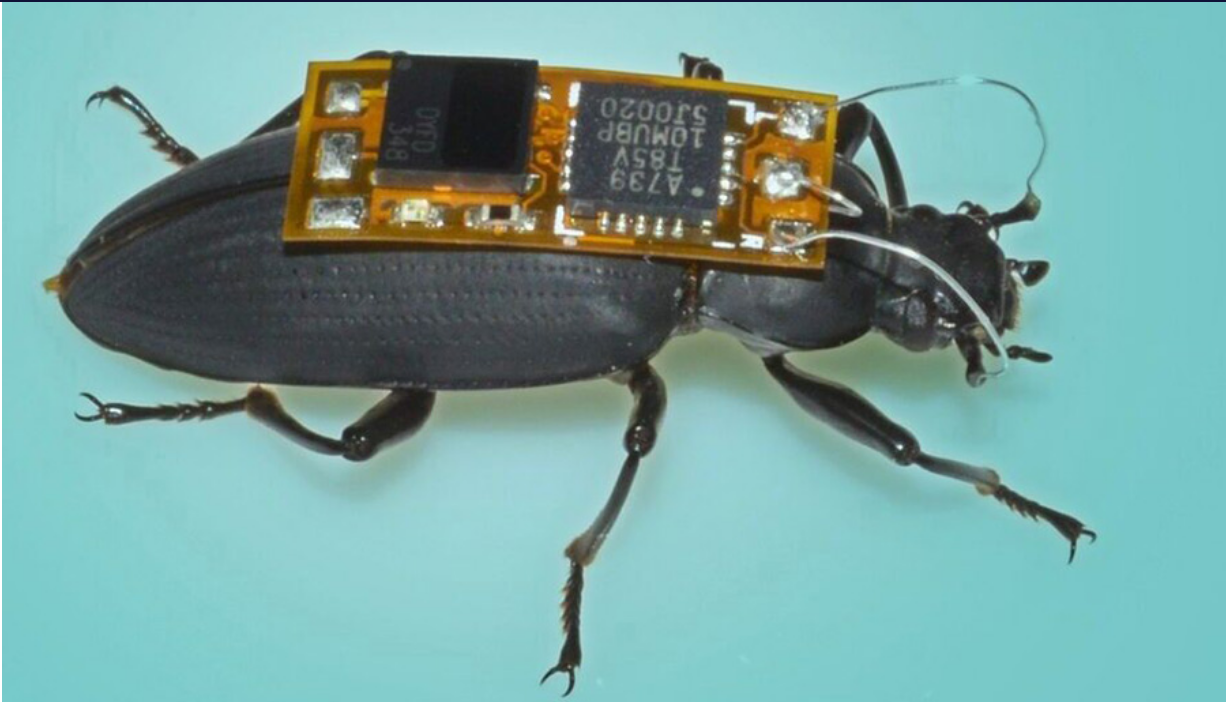Image 1)
The ability to use remote power sources with ultra-small microchips and miniature machinery is the next-generation tools for the new type of robots that size is less than a millimeter. The miniaturized sensors like tiny CCD cameras can be the tools that are making those systems more flexible than ever before.
Those miniature robots can use the maser, or coherent radio waves or laser systems as a power source. Or they can operate on the induction layer that delivers electricity to those systems. But there are much more advanced concepts, that can make those systems more independent and more flexible than any remote-control and remote power source can ever be.
*********************************************************
The electric eel's electric cells can use as the power source for drones and miniature robots.
The use of biological power sources makes drones and robots flexible and unseen. The idea of that kind of system is that the robot can eat "normal nutrients". The normal nutrient can use to deliver energy to cloned cells that are creating electricity.
The electric eel's electric cells can use to deliver energy to the miniature robot bugs. They can also be used as the power source in robot birds that must remain unseen. The film above this part of the text introduces a bionic bird that looks like a robot. But there is the possibility to create robot birds that look exactly like the real bird. The operational range of the robot birds is amazing.
But living cells that are creating electricity can use also as an energy source for the same kind of systems that we use in everyday life. The voltage that those cells are giving is high enough that at least laptops and mobile telephones could use those electric cells as the power source.
Those cells can be the cloned electric eel's electric cells. They can use as power sources in non-organic and organic systems. The cyborg means the combination of living tissue and microchips. The system can use the combination of the cloned neurons and microchips for independent operations.
******************************************************************
Image 3) Inside science/BRIEF: The World's Smallest Remote-controlled Cyborg Bug
Cyborg mites
The cyborg mite can be the next-generation robot concept. This kind of system can benefit cloned neurons and electric cells of electric eels. The biological power source can make the use of natural nutrients possible.
The cyborg mite has a biological power source. The system looks a little bit like some kind of mite. This cyborg bug drinks sugars from vegetables. And that sugar can use in the electric cells.
And that nutrient is delivered to the cloned electric cells that are taken from the electric eel. Then there is the living neuron that communicates with the microchip. And at the top is the small-size laser-led that allows the system to communicate with other similar cyborg mites. That kind of system can make the next generation of drone swarms possible.
https://www.insidescience.org/news/brief-worlds-smallest-remote-controlled-cyborg-bug
https://scitechdaily.com/smaller-than-a-flea-the-smallest-remote-controlled-walking-robot-ever/
https://en.wikipedia.org/wiki/Cyborg
Image 1) https://scitechdaily.com/smaller-than-a-flea-the-smallest-remote-controlled-walking-robot-ever/
Image 3) https://www.insidescience.org/news/brief-worlds-smallest-remote-controlled-cyborg-bug
https://miraclesofthequantumworld.blogspot.com/






No comments:
Post a Comment
Note: Only a member of this blog may post a comment.